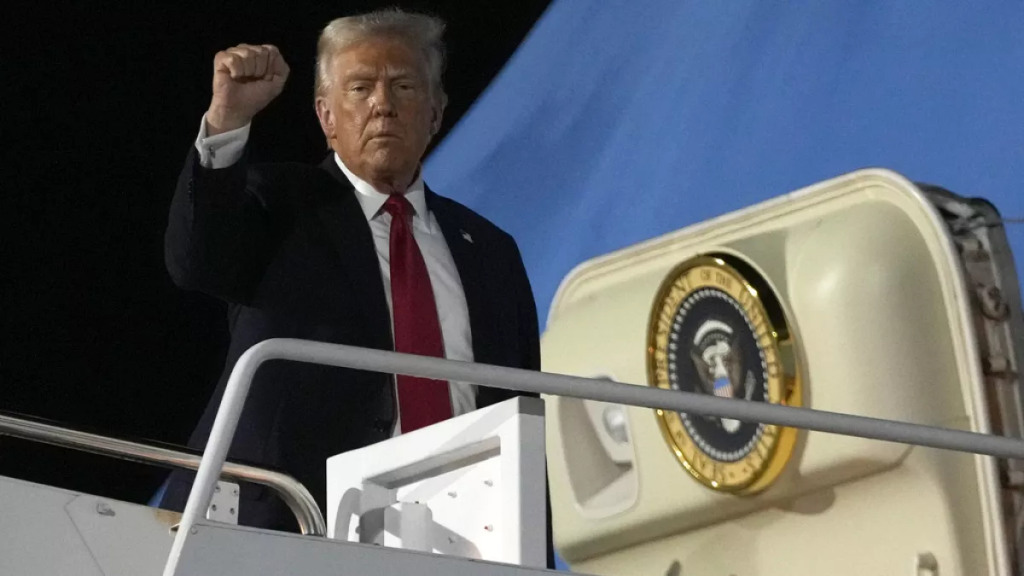For decades, the United States and the European Union maintained one of the strongest and most complex economic relationships in the world. Transatlantic trade supported millions of jobs, facilitated innovation, and contributed to global stability. But under President Donald Trump, that relationship was tested like never before. A deep dive into how Trump-era tariff threat strained EU-U.S. trade relations, impacted key industries, and escalated the Airbus-Boeing dispute. Also, this blog unpacks the events, legal mechanisms, economic data, and global repercussions of Trump’s tariff war with Europe.
Through an aggressive tariff strategy, Trump’s administration targeted longstanding European exports such as wine, steel, and automobiles—reshaping the economic and diplomatic dynamics of the transatlantic alliance. The pressure points were clear. The U.S. imposed tariffs citing national security (Section 232) and retaliatory rights (Section 301), and threatened even broader measures—particularly against the EU auto industry. The situation further deteriorated as both sides invoked the decades-long Airbus-Boeing subsidy dispute, leading to tit-for-tat tariffs on billions of dollars in goods.
Wine and Cheese: Luxury Exports Hit Hard
In October 2019, the Trump administration imposed 25% tariffs on a wide array of European luxury goods, including:
- French and German wines
- Italian cheeses
- Scotch whisky
These tariffs were enacted under Section 301 of the Trade Act of 1974, in response to the WTO ruling in the Airbus case that allowed the U.S. to retaliate against EU subsidies.
Impact:
| Product | Tariff (%) | Export Drop (2019–2020) |
|---|---|---|
| French Wine | 25% | -37% |
| Scotch Whisky | 25% | -35% |
| Italian Cheese | 25% | -30% |
These tariffs disproportionately hurt small European producers and U.S. importers. American businesses that relied on niche imports were suddenly burdened with steep costs, many of which were passed on to consumers.
Steel and Aluminum: Allies Treated as Threats
Under Section 232, the Trump administration imposed a 25% tariff on steel and 10% on aluminum imports in 2018. Although initially intended to target overcapacity from China, the tariffs were broadly applied—even to close allies like Germany, France, and Italy.
Consequences for the EU:
- EU exports of steel to the U.S. dropped by ~22% in 2019.
- The European Commission retaliated with tariffs on $3.2 billion worth of U.S. products, including:
- Motorcycles (Harley-Davidson)
- Bourbon whiskey
- Orange juice
This marked a rare moment of discord between NATO allies, prompting questions about the strategic logic of invoking national security to penalize longstanding partners.
The Auto Tariff Threat: A Line Almost Crossed
Perhaps the most destabilizing threat came in 2019, when Trump considered imposing up to 25% tariffs on European automobiles under Section 232.
European Auto Sector Snapshot:
| Country | U.S. Auto Exports Value (2019) | % of EU Auto Exports |
|---|---|---|
| Germany | $27 billion | 44% |
| UK | $10 billion | 16% |
| Italy | $7 billion | 11% |
The EU auto industry directly and indirectly supports over 13 million jobs—and the U.S. is one of its largest export markets. The threat of tariffs sent shockwaves through markets, with automakers like BMW, Volkswagen, and Daimler warning of factory cutbacks and price hikes.
While the tariffs were never enacted, the threat itself forced the EU to begin considering a more self-reliant industrial policy.
The Airbus-Boeing Dispute: Fuel on the Fire

At the heart of the EU-U.S. trade flare-up was the long-running dispute between Boeing (U.S.) and Airbus (EU)—two giants in the global aerospace industry.
Key WTO Rulings:
- 2019: WTO ruled the EU illegally subsidized Airbus.
- 2020: WTO ruled the U.S. illegally subsidized Boeing.
This symmetry allowed both parties to impose retaliatory tariffs:
- U.S.: Tariffs on $7.5 billion of EU goods (2019)
- EU: Tariffs on $4 billion of U.S. goods (2020)
Affected Products:
| U.S. Tariffs on EU Goods | EU Tariffs on U.S. Goods |
|---|---|
| Aircraft parts, olives, cheese | Aircraft, tractors, tobacco |
| Wine, whisky, cashmere | Nuts, ketchup, fitness gear |
These tit-for-tat moves complicated global supply chains and increased costs for businesses on both sides.
A Bilateral Relationship Under Strain
| Metric | 2018 | 2020 | Change (%) |
|---|---|---|---|
| U.S. Imports from EU | $487 billion | $428 billion | -12.1% |
| U.S. Exports to EU | $319 billion | $270 billion | -15.4% |
| EU Steel Exports to U.S. | $6.8 billion | $5.3 billion | -22% |
| EU Wine Exports to U.S. | $3.7 billion | $2.6 billion | -29.7% |
While COVID-19 contributed to some of the declines, tariff measures clearly exacerbated the downturn in trade flows.
Resolution and Rebuilding: Post-Trump Adjustments
In 2021, under President Biden, the U.S. and EU agreed to suspend tariffs linked to the Airbus-Boeing dispute for five years, marking a key step toward normalization.
Other developments included:
- October 2021: U.S. and EU reach deal to replace steel and aluminum tariffs with a quota-based system.
- Launch of the Trade and Technology Council (TTC) to foster deeper transatlantic cooperation.
While these moves eased tensions, the scars of the tariff war remain, and the EU continues to push for WTO reform and reduced reliance on the U.S. market.
Conclusion:
Trump’s tariff policy placed immense strain on U.S.-EU trade relations. By invoking national security and retaliatory rights, the administration redefined how allies interacted within a rules-based trading system. Key sectors—from steel and wine to aviation and autos—felt the effects in supply chains, prices, and investor confidence.
While some goals were achieved—such as spotlighting structural subsidies in aerospace—many of the tariffs proved blunt, inefficient tools that led to collateral damage on both sides.
Mattias Knuttson, Strategic Leader in Global Procurement and Business Development, summarizes:
“The U.S.–EU tariff clashes under Trump were a stress test for the world’s most mature trading relationship. The experience underscored the need for stable, transparent, and mutually respectful frameworks to navigate future trade disputes.”
As geopolitical tensions evolve, the lessons from the Trump-EU tariff chapter remain essential. Trade wars may be easy to start—but rebuilding trust, aligning strategies, and protecting shared prosperity takes far longer.
Trumps Tariffs Trade War Series:
Historical Background
- From Protection to Prosperity: The Role of Tariffs in Financing Early America
- The Tariff Battles of the 19th Century: Industrial Growth and Political Divide
- How Tariffs Built Railroads, Factories, and the American Dream (1800–1912)
Background to Today’s Tariffs
- From Smoot-Hawley to the WTO: A Century of Trade Policy Shifts
- The Rise of Free Trade and the Decline of Tariffs: 1945 to 2000
- The Tariff Comeback: Why Tariffs Returned as a Political Weapon in the 21st Century
Trump Tariffs Deep Dive: Trade Wars with the EU, China, and Beyond
- Trump’s Tariff Strategy: National Security or Economic Gamble?
- EU Under Pressure: Wine, Steel, and the Automotive Tariff Threat
- The U.S.-China Trade War Timeline: From Tariff Waves to Tech Decoupling
- Collateral Damage: How Trump Tariffs Affected Mexico, Canada, India, and Japan
Country-by-Country Response Monitoring: Reactions to Trump’s 2025 Tariff Hike
- China Strikes Back: Export Controls, Rare Earths, and Consumer Tech Retaliation
- European Union’s Balancing Act: Strategic Patience or Trade Fight Ahead?
- Japan and South Korea: Strategic Allies or Silent Rivals in Tariff Diplomacy?
- ASEAN & India: Winners or Losers in the Tariff Shuffle?
- South America’s Role in a Polarized Trade World
Ongoing Monitoring and News Reaction: Tracking Trump’s Tariffs in Real-Time
- Week-by-Week: The Global Market Reaction to Trump’s 2025 Tariff Policy
- U.S. Companies Caught in the Crossfire: How Businesses Are Adjusting to Tariff Shocks
- From Retail to Rare Earths: Key Sectors Most Affected by New Tariffs
- Trade Talks Tracker: Are New Negotiations a Signal of Resolution or More Chaos?
- Inside the Beltway: How Congress, Lobbyists, and Think Tanks are Shaping the Tariff Narrative





